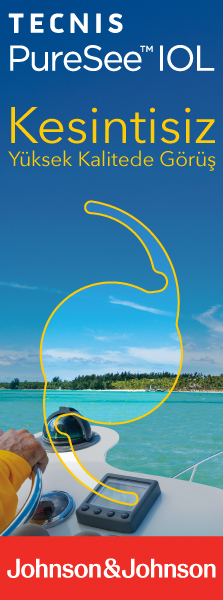The introduction of anti-vascular endothelial growth factor (VEGF) treatment led to significant improvement of vision in patients with neovascular age-related macular-degeneration (AMD).
However, the treatment for advanced AMD, AMD associated to subretinal hemorrhages or retinal pigment epithelium (RPE) tear, and/or non-responders is still controversial.
Maculoplasty is a possible surgical approach in these patients, with the potential of restoring the retinal anatomy and achieving stable long-term results.[1,2]
The rationale for transplanting autologous full thickness grafts of RPE, Bruch's membrane and choroid from the periphery in neovascular AMD is that these cells may be able to support the photoreceptors in the macular area. They produce antiangiogenic factors, for example pigment epithelium-derived factor, that protect against oxidative damage and inhibit CNV.[3] Additionally, an intact Bruch's membrane inhibits CNV formation. Transplantation of retinal pigment epithelium (RPE) was introduced more than two decades ago, and considerable progress has been made regarding surgical technique and outcome.[4,5]
Today, autologous RPE[6,7] is used in clinical studies because homologous transplants make long-term combined immunosuppressive therapies necessary, and these are not well tolerated by elderly patients.
Different transplantation techniques are currently used in clinical studies: the RPE suspension technique [8] (Figure 1) and the RPE-choroid-patch technique.[9]
The RPE-cell suspension, providing limited amounts of cells on a partially defective basal lamina can easily be delivered subretinally through small retinotomies, which can be sealed with a gas bubble.
The translocation of a full thickness RPE-choroidal patch provides a regular cell patch of polarized RPE on its own basal lamina. It can be obtained either through two large and posterior retinotomies (Figure 2), or through a wide peripheral retinotomy at the ora serrata (Figure 3). The technique still carries a high risk for intra- and postoperative complications. Thus, a silicone oil tamponade is mandatory, necessitating a second vitreoretinal surgery for silicone oil removal.
In many papers, it is reported that transplantation of RPE-choroid patch and RPE-cell suspension enabled the maintenance of distance BCVA or in the best cases the restoration of foveal function.
However, reading ability was rarely reported to be restored, or improved.[10] This observation was not confirmed in my series, as I will later describe.
Transplantation of an RPE-choroid patch provides an organized cell layer over its own basal lamina, whereas transplantation of RPE cells suspension has the disadvantage that a limited amount of cells is distributed over a damaged basal lamina with an uncertain fate.
This implies that uneventful transplantation of RPE-choroid patch is a better cell source than RPE-cell suspension and may offer a greater chance of regaining normal retinal structures and thus visual function. In a previous paper[10], the limited gain in vision after surgery was given two explanations.
A- The RPE-choroid patches that reached the edge of normal RPE on one side started building RPE bridges from this side. These grafts showed better maintenance in colour and autofluorescence over time.
B- The RPE-choroid patches looked regular and well organised on TD-OCT. However, on SD-OCT irregularities in the cell layers within the graft were visualized. These irregularities, suspicious of scar formation or increased gliosis, may also explain the inadequate visual recovery.
MacLaren et al.,[11] reported that, whenever a clear outer nuclear and photoreceptor layer is absent, which he interpreted as photoreceptor loss over the graft, the visual gain was limited. I would like to reinforce this last concept. The visual gain is obtainable only if we operate eyes in which the outer nuclear layer and the photoreceptors are still visible in SD-OCT preoperatively. It is reported[10] that the functional results with RPE transplantation techniques do not approach the levels of outcome seen with anti-VEGF treatment.
Although complication rates after transplantation of RPE seem to be greater, long-term effects of repeated intravitreal application are still unknown.
In my experience, I have noticed that, when the case selection is adequate and when postoperative complications do not compromise macular anatomy, the visual improvement is greater with RPE transplantation than with anti-VEGF.
PERSONAL EXPERIENCE
I initiated this surgery with my coworkers in 2007.
We started by operating patients that really had no other choice in the management of their disease, besides “doing nothing”.
We chose to isolate a full thickness patch of choroid and RPE from the periphery of the same affected eye, after performing a larger than 200° temporal peripheral retinotomy.
I made an analysis of the first 84 eyes enrolled. They were all affected by a CNV due to AMD. The counter eye was not affected by CNV.
The inclusion criteria for surgery were one of the following: 1. Subfoveal hemorrhages, RPE tears, eyes non-responders to at least six antiVEGF injections. A non-responder was defined as an eye with no improvement in vision after injections.
The preoperative mean best corrected visual acuity (BCVA) was 1.5 logMAR.
The mean postoperative BCVA after 3 years was 1.2. The gain in vision was not statistically significant.
However, 36% of eyes gained 3 lines of logMar vision but only 10% of them had a final vision better that 1 logMAR.
In order to study the prognostic factors, I selected from the whole group, 19 eyes which ended up with a useful visual acuity of 0.5 logMar (0.32 decimal) or better, and 35 eyes with a poor final BCVA of 1.1 logMAR (0.08 decimal) or worse, at the last visit of the follow up.
In other words, my aim was to look for what made surgery successful and which, on the other hand, were the characteristics of the unsuccessful eyes.
The successful eyes were in younger patients, with a shorter duration of symptoms, although the differences in the data of age and duration were not clinically significant.
The successful eyes had higher mean initial BCVA (0.7 logMAR). What I found more significant was that, while no eyes could read preoperatively, all the eyes, with final BCVA of 0.5 logMAR, regained also reading ability.
Eyes with poor final BCVA were the eyes with poor mean initial BCVA (2 logMAR). None of them regained reading ability.
We looked specifically for anatomic prognostic factors. The successful eyes showed preoperatively a good visibility of the external layers, not always the ISOS junction, but at least the external limiting membrane. These layers remain well visible postoperatively. Furthermore, even when the ISOS junction is not well detectable preoperatively, it becomes more and more visible in the postoperative months.
While in the unsuccessful eyes, the visibility of the external layers is preoperatively very poor and it deteriorates postoperatively, meaning that in some eyes there was an atrophic change in the retina.
A significant observation is the sudden disappearance of macular edema a few hours after surgery.
I observed that, when BCVA improved, it improved with time along the follow up and not immediately. In a parallel fashion, anatomy improved with time.
There are intraoperative details and tips, which may determine the success of the surgery. For example, decentration of the patch may lead to atrophy of the patch under the fovea. The edges of the patch should not be touched, because mechanical damage to RPE leads to atrophy. The harvesting site of the patch should not be too close to the final position of the patch. In fact a fibrotic scar may start from the harvesting site and involve the patch itself. It is finally critical to avoid bleeding, both intraoperatively and postoperatively. To do so, diathermy should be extensively used to cauterize the feeder vessel when removing the CNV and also at the edges of the harvesting site, when the patch of choroid and RPE is isolated. Bleeding from the feeder vessel may lead to hemorrhage under the patch.
The occurrence of PVR may be minimized by the following surgical steps: shaving the vitreous base as extensively as possible, performing a peripheral retinotomy, limiting the number of retinotomies with the 41G needle, to induce the retinal detachment, performing the 41G retinotomies posterior at the arcades, removing the peripheral retina anterior to the retinotomy, avoiding subretinal bleeding.
Reperfusion of the patch was observed in 95% of cases.
By improving the surgical technique and the selection of the cases, the results are improving. By observing the patients, I remain convinced that the idea of placing an healthy RPE under the retina has a solid rationale. Furthermore, the healthier the retina, at the moment of surgery, the more promising the results.
REFERENCES/KAYNAKLAR





